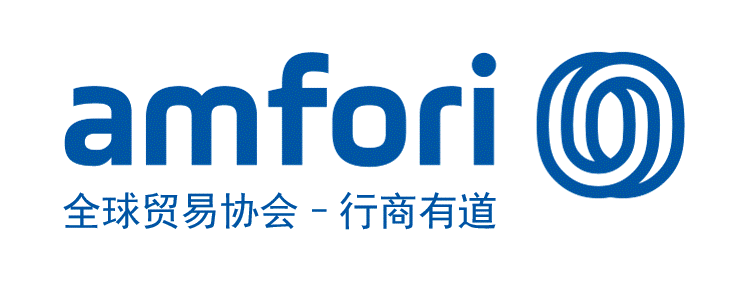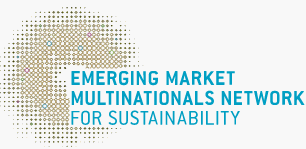How career women "make waves" under the tide of digital economy
2023-04-13未知责任编辑0

Wang Jinyi
Analyst of the Women’s Economic Empowerment Program of UN Women China
China has rolled out a plan for the overall layout of the country’s digital development recently, a sign that the digital economy is elevated to a national strategy and the country will speed up to construct “Digital China”. In 2023, regarded as the first year of digital economy era, it is undoubtedly on of the hottest topics this year.
Digital economy would leave no one behind. UN Women decided the theme of International Women’s Day this year as “DigitALL: Innovation and technology for gender equality”, in order to emphasize technology’s role in advancing gender equality and make an appeal for bridging the gender gap in the digital domain. Encountered with surging digital economy, will career women be able to overtake or will they subject to even greater challenges?
Recently, we have interviewed Wang Jinyi, an analyst of the Women’s Economic Empowerment Program of UN Women China, and asked her views on this issue.
What is empowerment?
Make the development of science and technology trickle down to everyone
Q
The theme of this year’s International Women’s Day is “DigitALL: Innovation and technology for gender equality”. How can promoting digital inclusion safeguard women’s economic rights and interests?
Wang Jinyi:
Nowadays, our lives depend on technology, say it attending classes and meetings, or contacting family and friends, from making bank transactions to medical appointments. Everything is going digital. Yet according to the International Telecommunication Union, Internet is inaccessible to 37% of female population and the number of female netizen is 259 million fewer than male in 2022, considering the fact that women make up nearly half of the world’s population. Digital Inclusion affects women’s access to digital services, especially elderly women, women with disabilities and women in rural areas.
Economically, if women do not have access to the Internet, they will not be able to develop the digital skills they need. On the one hand, this could bother their employment as information technology is widely used in the workplace; on the other hand, it will reduce their chances of pursuing careers in science, technology, engineering and math (STEM) related fields. By 2050, 75 percent of jobs will have connection with STEM. Yet today, women make up 28 percent of engineering graduates and 40 percent of computer science graduates; in developed countries, women make up only 26 percent of the STEM workforce. In addition, access to the Internet equates access to updated information and learning resources, all of which boost employment. Thus, bridging the digital divide and increasing digital inclusion is an important way to improve economic and social equality.
“DigitALL: Innovation and technology for gender equality” emphasizes that no one should be left behind while the economy and technology develop. In other words, this is to make technological development benefit every community and everybody.
Why empower?
Current situation is far from satisfaction though has improved
Q
How to understand “economic rights of working women”? What are the examples of gender divide in the workplace?
Wang Jinyi:
To put it simply, economic rights are the right to participate and supervise in the economy and to have access to decent work. Gender inequality in the workplace includes employment and occupational discrimination, underrepresentation of women in leadership and decision-making positions, unequal pay for equal work, glass ceilings, sexual harassment, and lack of flexible work arrangements, childcare support, paternity leave, etc.
Q
What is the current status of economic rights of working women? Do we have any evaluation criteria for it?
Wang Jinyi:
We have made progress in many aspects in recent years, but great efforts are still needed. Normally, we focus on four areas to grasp the gender gap in the economy: the participation rate of female labor force, the gender pay gap, female participation in leadership, and unpaid care work of women.
Globally, the participation rate of female labor force was only 47.4% in 2022, while in China, women account for 43.5% of all of the employed.
In terms of the gender pay gap, women earn on average 23% less than men globally. In China, a report indicated that women earned about 12% less than men in 2022.
Then considering female participation in leadership, women accounted for only 28% of global management positions in 2019. In China, the proportion of women among corporate directors and supervisors in 2020 was 34.9% and 38.2%, respectively.
From the perspective of unpaid care work of women, women spend an average of 3.2 times more time on unpaid care work than men worldwide. In China, women spend an average of 2.5 times more time per day on unpaid care work than men.
Q
To analyze information and communication technology (ICT) industry through the gender lens, what is female participation and career development in the industry now?
Wang Jinyi:
ICT is traditionally a male-dominated industry that women usually are underrepresented in the industry (especially in leadership). Women make up 14 percent of the workforce in cloud computing; 20 percent in engineering; and 22 percent in artificial intelligence worldwide. Only 2% of CEOs and 10% of board members of top IT companies in Asia Pacific are women.
ICT women are inflicted with multiple stereotypes, such as “women have no gift for technology”. Collaborating with the National School of Development of Peking University and the Chengdu Economic Development Academy, we conducted a survey last year to understand the female development in China’s new economy. Although the report is still being refined, preliminary findings show that unconscious bias and gender stereotypes impede women from pursuing career in the ICT industry - quite a few companies believe that women’s expertise and personalities do not suit the industry, which significantly hinders women from working in the ICT industry.
The ICT industry has also been a particular focus of our programs in recent years. For example, paying close attention to industries such as ICT, the WeEmpowerAsia program for 2019-2022 has accelerated the refinement of industry norms and urged employers to implement policies which promote gender equality as soon as possible. After our partnership with the China Electronics Standardization Association, indicators at gender dimension were incorporated into the newly revised Evaluation index system on social responsibility governance level of information and communication technology industry. 66 ICT companies made commitments to promote gender equality in the workplace, marketplace and community, and tens of thousands of industry representatives were trained on gender knowledge and how to create a workplace of gender equality. This year, we will launch a new project in Guangdong, to promote the career development of female factory workers in three industries including the ICT industry, and the construction of gender-inclusive workplaces.
Q
What is the necessity and significance for employers to proactively protect the rights and interests of working women and give women equal access to socio-economic benefits?
Wang Jinyi:
It is necessary because it is required by a series of international conventions and national laws and regulations, which means that employers bear the responsibility to comply and implement.
In terms of importance, on the one hand, gender equality is the core issue of the Sustainable Development Goals (SDGs). It is vital to ensure that women’s economic rights are safeguarded and the fruits of socio-economic development are shared by women on equal terms if we want to achieve SDGs. On the other hand, promoting women’s economic empowerment has tangible business benefits for employers, which ultimately has a positive effect on economic development. Research shows that companies with the most gender-balanced executive teams are 25% more likely to have above-average profitability than those with the least gender-balanced teams. And companies with more than 30% female executives perform better than companies with less than 30% female executives.
How to empower?
Stakeholders should work together to grasp opportunities and tackle challenges
Q
The existence of problems prompts people to act. Could you introduce some representative programs in home and abroad aiming for protecting women’s economic rights? What methodologies and approaches can we learn from their success?
Wang Jinyi:
One of the main tools that UN Women uses to promote women’s economic empowerment is the WEPs, or Women’s Empowerment Principles, whose main target are private sector employers. They guide businesses to advance gender equality in the workplace, marketplace and community. As of March 2023, more than 7,000 companies worldwide have committed to advancing gender equality and women’s empowerment by signing the CEO Statement of Support for the Women’s Empowerment Principles, with more than 350 in China's mainland.
Women’s economic empowerment is a key focus of UN Women in China. For example, the WeEmpowerAsia program for 2019-2022 has, on the one hand, issued standards and guidelines targeting industries and enterprises, and promoted the construction of an inclusive business culture by encouraging enterprises to practice WEPs; on the other hand, from a broader perspective, advocated for public policies and raised public awareness, encouraging the society to act together and make a difference.
At the same time, we have promoted capacity building for women to provide strong support for employment, promotion and entrepreneurship. The most important thing in this process is to create a supportive environment for women, that is, an external environment that is conducive to women’s development, from public policy, business policy to good changes in social norms, rather than focusing only on women’s capacity building itself. We should make various stakeholders to participate in this process. For example, we work with government departments, employers, academic institutions, social organizations, and other stakeholders to support the priorities of the Chinese government, including the implementation of a series of laws such as the Law on the Protection of Women's Rights and Interests, and the implementation of policies related to gender equality in the workplace.
Q
What opportunities does the advent of the digital economy provide for female entrepreneurs?
Wang Jinyi:
For people with ICT-related skills, digital economy has opened up new spaces for employment and brought opportunities for entrepreneurship to some extent. For example, the development of ICT technology has given rise to a number of new jobs, such as community operations, live e-commerce, and short video content creation. This ensures that women entrepreneurship is no longer restricted by less access to capital or time and space, which is caused by traditional gender norms. Thus their income sources are expended. Meanwhile, such work gives greater time flexibility for both men and women to handle care-giving responsibilities.
The proportion of women entrepreneurs has reached 55% in the internet sector, according to the data of the State Council in 2019. A soon-to-be-released study conducted by the United Nations Food and Agriculture Organization in China and UN Women China also shows that women accounted for 51.8% of the 586,000 active produce stores on an e-commerce platform as of the end of 2019, with women-owned stores contributing for 59% of produce turnover. However, jobs such as e-commerce require digital proficiency, which brings us back to the issue of digital inclusion mentioned earlier, but many older, less educated rural women often face additional barriers. At the same time, new jobs like these are often weakly stable, and many workers lack basic protections such as social security. Their proper working hours and rests also cannot be guaranteed. Therefore, targeted measures are needed for more inclusive and higher quality development of the digital economy.
Source: China Sustainability Tribune
Best Practices
- The 100-year brand — Air Liquide also has a sense of juvenile
- Beijing Public Transportation Corporation: Developing green transportation to build a harmonious and livable capital
- CGN: Building a modern factory in barren deserts and developing a new win-win cooperation model along “Belt and Road”
Upcoming Event

All the materials on the site “Source: XXX (not from this site)” have been reprinted from other media. They do not imply the agreement by the site.
All the materials with “Source: CSR-China Website” are the copyright of CSR-China Website. None of them may be used in any form or by any means without permission from CSR-China Website.
GoldenBee Official WeChat
Copyright © Csr-china.net All Right Reserved.
京ICP备19010813号










